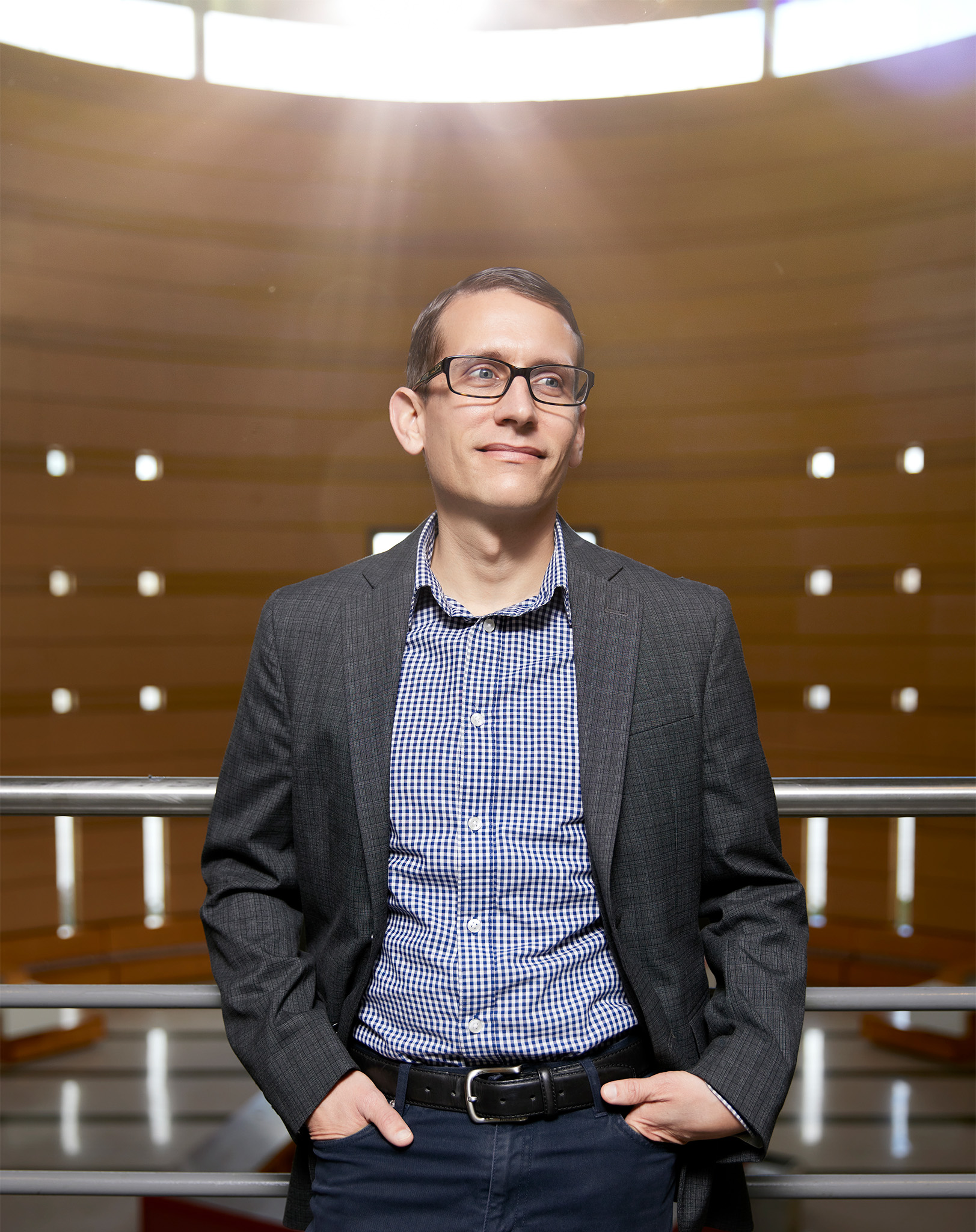View
Into the Weeds
by Deirdre Kelly
photography by Mike Ford
Just over five years ago, when Canada’s Cannabis Act legalized recreational cannabis use in all provinces and territories, the rush to light up was noticeable, especially among the nation’s youth. Between 2017 and 2019, cannabis consumption by Canadians between the ages of 20 and 24 soared to the point that nearly half of the country’s young adults used cannabis – with prevalence rates almost double that of older age groups – according to a 2019 national survey. But are these high rates of cannabis use among youth a problem? Jeffrey Wardell, a professor of psychology in the Faculty of Health, wants to find out.
As the founding director of the Behavioural Alcohol and Cannabis Lab at York University, which examines the multiple determinants of substance use and addiction, Wardell is researching the motivations and potential side effects of cannabis use among youth, including teens and young adults. Their numbers are high.
Citing the most recent data from Health Canada, Wardell notes that 45 per cent of young adults are reporting current use of cannabis. One cause for potential concern is the growing number of youth who say they take cannabis for medicinal purposes to relieve pain, feelings of anxiety and other mood disorders. Yet, most do not seek medical support for cannabis from a doctor, so they may be self-medicating without a clear understanding of the potential risks involved.
“There’s a gut belief that cannabis isn’t risky,” Wardell says. “But we still don’t know if it’s going to be safe in the long term. There’s just not enough research to validate the assumption.”

But there is research that finds young people who say they use cannabis for medical reasons might be overdoing it.
“I did compare them with those who said they took cannabis for recreational reasons,” Wardell says, “and what we found is that there were a lot of differences in this group, the biggest difference being that the youth who reported using cannabis for physical and mental health reasons were much more likely to be daily users and more likely to report cannabis-related problems.”
Wardell’s investigation – the results of which were published in 2021 in the Journal of Adolescent Health – also found that youth who said they used cannabis for medicinal purposes generally had an elevated risk of cannabis-use disorder compared to those who reported using it recreationally.
“I’m not suggesting that cannabis has no benefit to youth who use it,” Wardell adds. “I’m saying we need to raise awareness that such behaviour is happening at an elevated rate, largely outside a health-care context, and that there could be risks involved.”
To mitigate those risks, Wardell and his fellow researchers at York’s BAC Lab recently launched a cannabis-tracking smartphone app for youth as part of the next stage of their research program. Featuring a complex design, the interactive app surveys young adult participants’ medical cannabis experiences over a two-week period by means of prompts linked to an anonymous online questionnaire.
Some of the questions target times and days of use, solo versus group consumption habits, cannabis strains and quantities, symptoms before and after ingestion, purchasing locations and more. The aim is not to police or even censure cannabis use among youth. “It is to figure out if young people are making smarter decisions when taking cannabis for symptom management,” Wardell says.
“Right now, they are not getting advice from their doctors and they are not asking for it. So we have some catching up to do. The data will help us to target our education efforts towards behaviours that are risky. It will help us to help them to help themselves.” ■